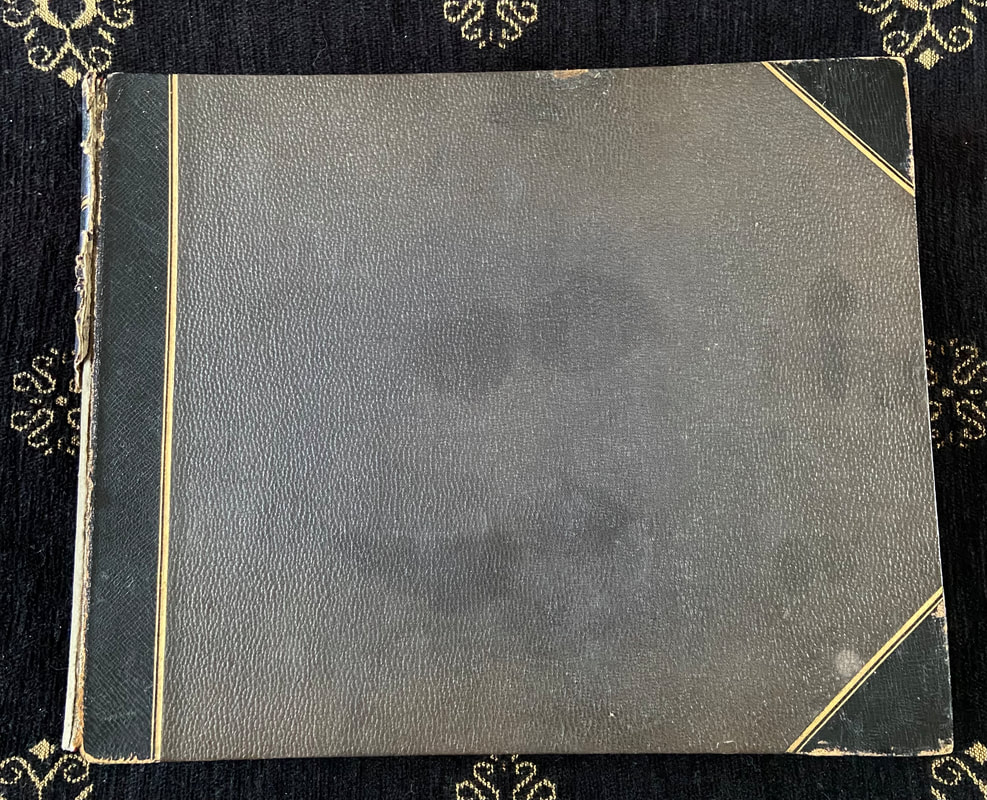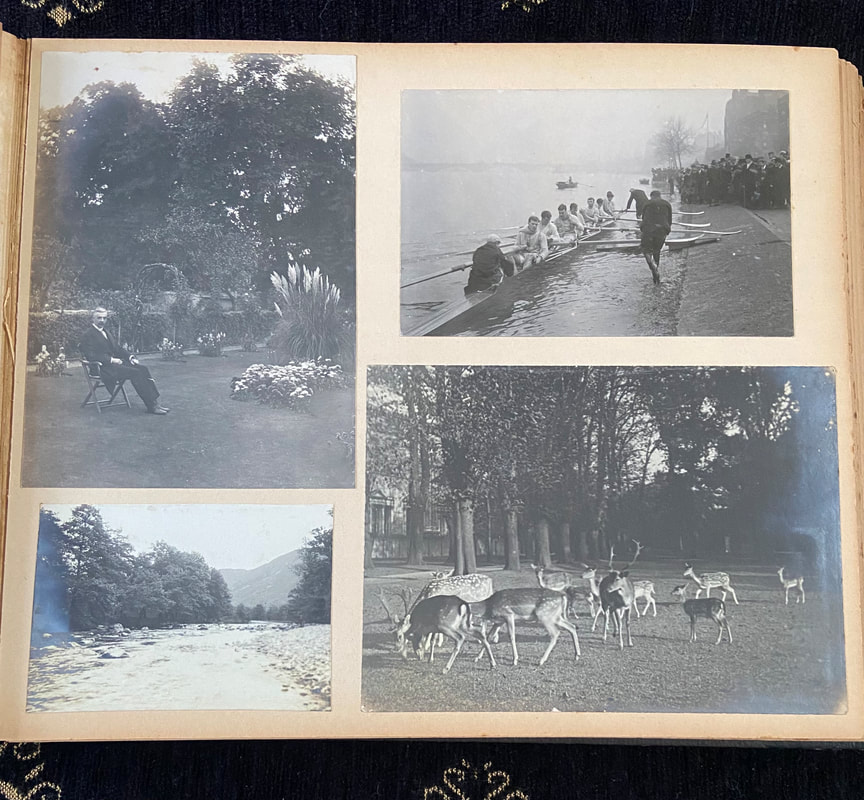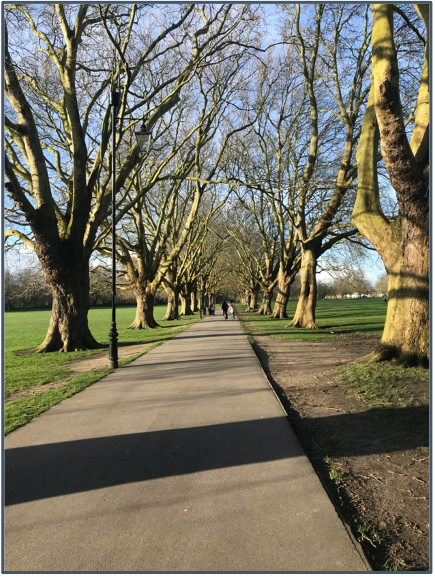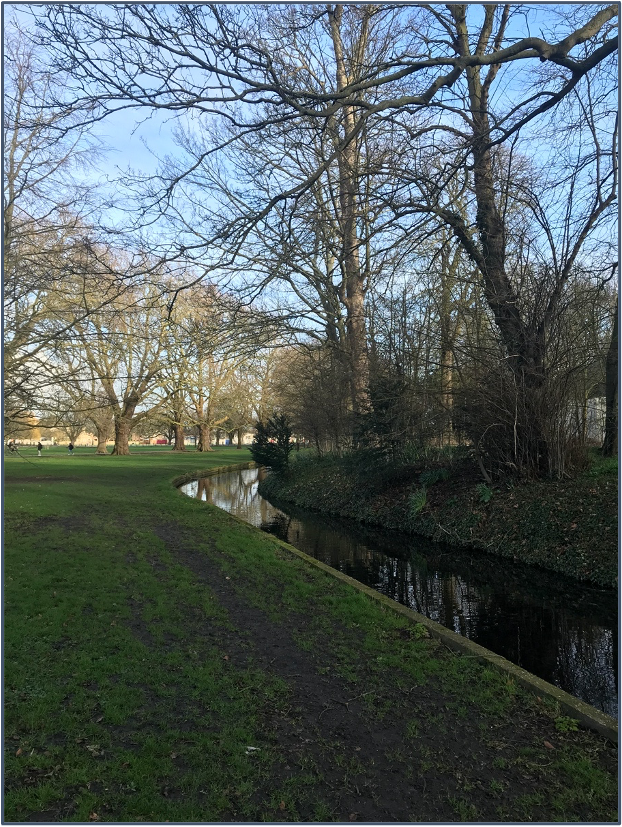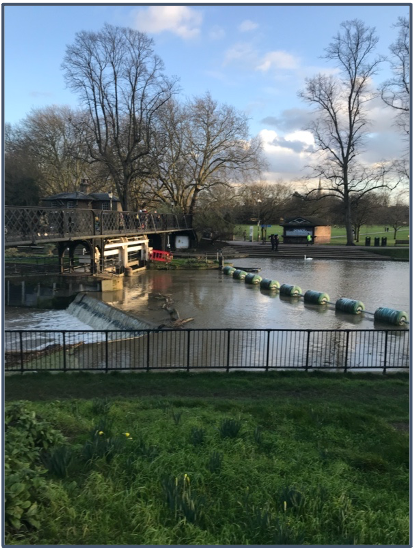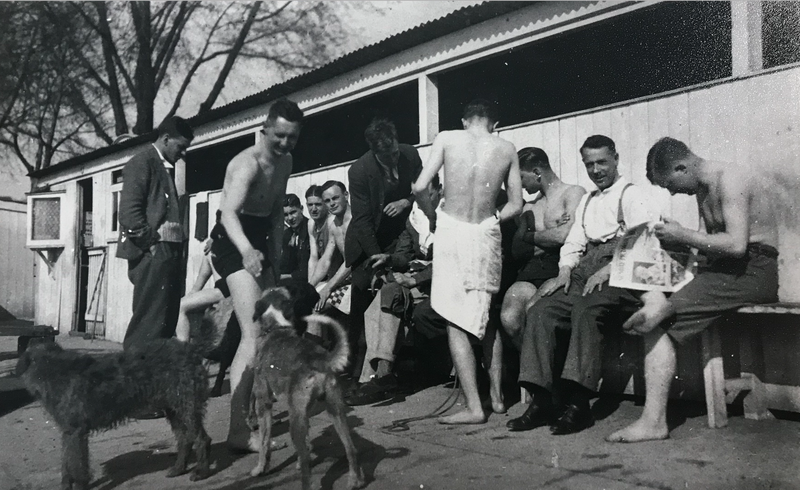|
Very excited about this winter side-project. I have acquired this lovely old photograph album which has lots of wonderful, original photographs from the early 20th C - with many original Cambridge photographs, Fulham Football Club and Military Pictures. Below is a sneak peek for you
Over the next few months, I will be researching each picture individually and will share the journey.
2 Comments
Jesus Green is a 11.3ha Cambridge City Council owned public park, within the Market Ward of Cambridge and lays to the immediate north of the City Centre. It consists of large open green spaces, a variety and abundance of trees and shrubs, a contained play park, skate park, tennis courts and a large public Lido. The site is situated within what was once a much larger area of historical common land within the River Cam corridor. Victoria Avenue, which bounds the site on its eastern side, separates Jesus Green from Midsummer Common, providing distinction from its previous use as common land to an area of public park. On the north side the site is bound by the River Cam, on the south side the site is bound by a stream called Jesus Ditch which separates the park from the grounds of Jesus College. Park Parade and its small development of early 19th century houses mark out the western boundary of Jesus Green.

The site of Jesus Green is in close proximity to what is now known as Castle Hill and which, since at least Roman times, has been used to defend the strategic river crossing and associated settlement that is now the city of Cambridge. Whilst Jesus Green is close in proximity to this important site, it has probably remained undeveloped as a result of its low lying, poorly drained nature and the soil type more unsuitable for cultivation.
There is some archaeological merit to the site with records of various items having been excavated or recorded including Palaeo-channels, burials, Plague victim inhumations, Nuremberg tokens and Air Raid Shelter/s. There is the potential for a number of features to be present if excavations were to take place.
Before enclosure took place in the early 19th century, the site formed part of an extended stretch of ancient common land that lay within the flood plain of the River Cam. In 1802 and 1807, the west and east open fields were respectively enclosed. In 1841, the Town Council proposed to enclose the main part of the fields; however, this was prevented due to public opposition.
Regulatory powers over the commons were given to the council in 1884 and were
strengthened in 1922. Later, the land was incorrectly classified as recreational and this has continued. In 1965, when the Commons Registration Act was passed, Jesus Green was not registered as common land. While contested in 1982, this was unsuccessful and as such the land remains classified as recreational and not common land.
Many physical changes have occurred to the site, in particular between 1886 and
1997. A major change occurred when Jesus Green was segregated from Midsummer Common by the building of Victoria Avenue in 1890. This signified a very different approach being taken to the management of the land, with Midsummer Common being retained as informal open grazing land and Jesus Green being developed more formally as a public recreation ground.
Much of the original layout from this period is lost through development that has since occurred, however, the original layout of the paths and avenues on Jesus Green, although changed to an extent, remain largely intact.
The site was made good use of during the First World War with the 6th Division using the site as a camp before deployment.
The 1920’s saw significant development with the construction of an outdoor swimming pool (Lido), putting green, tennis courts, Bowling Green, and a formal space for cricket and football. The character of the site changed from being an open meadow-like space to its current form, as a more formal multi-functional recreational ground.
 The significant changes to the park are shown by the map above. Courtesy of Cambridge City Council The significant changes to the park are shown by the map above. Courtesy of Cambridge City Council
There was also some increased use on the site for seasonal and annual events. One such event was the annual Horse and Cab show which ran for several years.
The late 19th century and early 20th century saw the layout of avenues, reinforcing
the formal character of the site. There was no record of the presence of trees prior to this date. The most dominant of the avenues runs between Victoria Avenue and the Lock and is lined today by mature London Planes. The nature of one of the avenues has changed over time with the introduction of somewhat smaller flowering species; this is retained to this day.
The 1970’s and 80’s saw further changes to the tree planting scheme with significant planting of limes and beeches.
Built features of the site have also been developed over the years, including, of particular note, the lock keeper’s house that is Grade 2 Listed, the public toilets, and community building, known as Rouse Ball Pavilion (no longer in use).
Later developments have included the construction of a large play area and skateboard park providing modern facilities and increasing the range of activities available, particularly for children and young people. A refreshment kiosk is also provided.
The Jesus Green Lido (opened in 1923), shown in the pictures below, is still in use today and still very popular.
The infrastructure required of a modern park such as bins, benches, and signage completes the transformation to a multi-functional recreation ground with a wide range of features available to the public. Notwithstanding the very significant changes to its original land use, elements of the original Victorian park layout remain. The site has significant historical value. A community project, looking at the social history of the site may identify many important socially historic events.
The park itself continues to provide a much needed, large green space with a variety of parkland features such as the waterway, mature trees, sports areas, play areas and pleasant walks. The site has extensive historical value, from its design as a City Park, through to the way in which it has developed and been affected by some modern development and traffic threats, along with its transition from ancient common land to an extensively used public park.
I will continue to to update this post with more in-depth history of Jesus Green as I go along, I just like to get the basics up so that they are available for anyone who is interested :)
If you'd like to support the work that I do, why not buy me a virtual coffee, I'd be really grateful and it will help keep me going!
Just click on the green button below :) Tales from Cambridge part 2 written by my aunt Joan Punter (nee Toller)
Another big influence on us was home-grown vegetables and fruit. Everyone kept allotments the (dig for victory) and if everything else was on ration we could at least live on fresh produce, so many hours were spent with our cousin, Christine [Christine Cash, nee Broom, Bill Broom’s daughter] helping bring home potatoes, carrots, onions, green veg, whatever you could grow we did and everything tasted so much different to nowadays supermarket stuff. Strawberries, asparagus, runner beans and peas were nothing like nowadays tasteless objects. Uncle Bill also kept hens and pigs, so it was something like a farmyard up Histon Road there, through the passage in Windsor Road. Auntie Hilda [Hilda Broom – Bill’s wife, Christine’s mother] plodded up there everyday carrying two buckets of pig ‘swill’ that Gran had boiled up on the gas stove. We were accustomed to watching hens having their necks wrung when they were ready for the pot. We helped pluck the feathers off them and I actually held them upside-down by their feet till they stopped fluttering (when they were dead they fluttered for a bit before they finally went still). Children accept these things as a normal part of life, but Uncle Bill used to laugh and say I was ‘bloodthirsty’. (perhaps that is why I’ve never been afraid of blood or gory sights in my work in the hospital!) Val and I were quite different in temperament as young children. She was the quiet, thoughtful and studious one; whereas I was outgoing, noisy, assertive and a dare-devil. She smiled sweetly and spoke quietly – I tended to shout and ‘lark around’ a lot. When dad came home in 1945 he quickly sorted me out and I received the discipline he thought I needed – but I always had Gran and Bill on my side and I distinctively remember Bill’s voice saying “Come on my little old sugar plum, over the road with your granny and me.” I loved Uncle Bill, and I thought him handsome with his black wavy Brylcreamed hair and twinkling blue eyes; also a real softie. He would have tears in his eyes whenever something upset him (or through laughing) and Christine was his pride and joy. If he wouldn’t let anyone hurt one hair on my head, you can imagine what he was like with her. Ivy and Russ were also a big influence on our lives when they lived with us after their marriage during the war. I could snuggle up with them in their bed any morning I liked, they played with me all the time, and I even ate off Russ’s plate, pinching his spouts. When I think of those poor girls, single parents, living in an upstairs flat with babies, also toddlers having nowhere to run around in a garden, driving their mothers into depression I realise how lucky we were to be born when family was everything, stayed together to build a secure and loving home, and it was rare to see a woman struggling on her own without the father and relations nearby to ease the burden. They never gave up on parenthood, they learned the skills to make it work, and had confidence through it for their children’s sake. They didn’t have to learn it from TV or a book. It was commonsense; and a joy, not a burden. Kids were always happy. When I was quite young my Gran acquainted me with the verse in the Bible that goes “Suffer the little children to come unto me, for such is the Kingdom of Heaven”. It always stuck in my mind. Children were something, not only innocent, but almost sacred. If anyone harmed them physically or emotionally, they were in danger of hell fire! When I was 11 I passed the scholarship (pre-11 plus exam) and had a choice of the Perse or the County Girls School, so I chose to go with Val to the newly built County Girls High School. It was an excellent school, brilliant teachers (called mistresses!) and I was in the top grade ‘A’ class. I have to admit that being with those brainy girls was demanding, and I struggled to keep up when I was 13-14, mostly because we had hours and hours of homework, and Bet and I had discovered boys, so spent a lot of evenings on Histon Road Rec and Jesus Green swimming pool. We both lliked the same boys so sometimes swapped! I looked a lot older than I was with massive boobs, and I wore uplift bras with tight sweaters, and a pair of real American tight jeans given to me by American friends when their dad was sent back by the U.S.A.F. to Minnesota! Dad was always on my case to stop my fun and games with the boys, and when we moved to Netherhall way I was 14, and I was only allowed to go to St Paul’s Church to meet ‘good’ friends (not common ones from Akeman Street as mum used to say!) So I got quite religious going everywhere with Val, and Den Beales got fed up biking across town to see me. So I got a new boyfriend called Brian Stalley, a County [school] boy 2 years older than me. He was a decent boy, played cricket, studied hard at school; so unlike my naughty friends. I had new friends too like Sadie, who was homeless and lived in a hostel; I sang in St Pauls choir and helped in other organisations, taught in Sunday School, worked for the Sudan United Mission, and after getting my five O Levels I got a job in University of Cambridge Exams Syndicate up Mill Lane as an examinations clerk preparing question papers for Press. (near dad at the Cambridge University Press opposite). It was about then, 16 years of age that I decided to do nursing training when I reached 18 with views to working in Africa with the S.U.M. Everything was arranged, my interview at Addenbrookes and I was accepted to start at 18. Everything went pear shaped when I met Mike (Michael Brown) at 17 and a half. He was 24, just back at U.C.L.E.S from his National Service in Malaya – fit, tanned, crew-cut hair, footballer, beer drinker, I fell in love! We got together at the University Ass. Club Xmas 1957, and everything went to the wall – Africa, Church, friends etc. Dad was in the R.A.M.C [Royal Army Medical Corps] with Frank Brown, so Mick was IN! However, I started my nursing training as planned and although I found it clashed horribly with any social life with Mick I stuck it out till the P.T.S. exam (which I passed very well) so kept going til six months was almost up, then I realised that marriage was out for a nurse (in those days you had to be Florence Nightingale) I talked to the Matron, who had no time for thoughts of boyfriends, marriage was forbidden, even engagements were kept secret. I was up in Hatton Ward sluice with the bedpan round while Mick lived it up on a Saturday night with his mates (and girls from work) so I gave in my notice. I knew I would go back into nursing one day, buut NOT NOW! They took me back in the Annexe as before, I got my sapphire and diamond engagement ring and looking back I was stupid because had I stuck it out, instead of romance I could have qualified, got married and still had Christopher [Chris Brown] in 1962! I changed, chameleon like, and in the fashions of the fifties wore pencil slim or very flared skirts, 4 and half inch stiletto heels, permed hair and smoked with a long cigarette holder. Every weekend Mick and I went dancing with our many friends, or up the Old Spring in Chesterton Road. Saturday afternoons were football or cricket as he played for the N.C.I., Central Old Boys, Cambridge University Press. I used to score for cricket and if it was a village match we had lovely teas laid out in the Church hall. This life went on for three years till I had Christopher at twenty three. I stopped smoking and drinking! Written by Joan Punter (nee Toller) – my aunt – transcribed by Michelle Bullivant Dec 2010 |
Cambridgeshire History Pages:
Contents If you'd like to go straight to a specific article or blog post within the Cambridgeshire History Pages you can click on any of the post titles in the list below and it will take you directly there. Alternatively, you can use the search box above to search by keyword or you can use the index further below. Summerfield: House, Street & Area History, Newnham, Cambridge.
Newnham Walls (Newnham, Cambridge) Church Rate Walk/Newnham Walk/Summerfield. Exciting Old Photograph Album History of Lammas Land, Newnham, Cambridge (Newnham Park) Brief History of Jesus Green, Cambridge Motorbike Girls, Oxford Road, Cambridge c.1928 Violet Broom & Marie Cruden Cambridge University Press Memories by Elizabeth Toller-Brown Teversham Recreation Ground Elton Community Archives Group St Neots Community Archives Group Soham Community Archives Group Cottenham Community Archives Group Stapleford Recreation Ground The Beechwoods Cambridge Guilden Morden Cambridge. Teaching & Artefacts Ely Cambridgeshire Community Archives Group Stilton Cambridgeshire Community Archives & History Cottenham Village Society Haddenham & Aldreth Blossoms & Bygones 1940s Event 2011 Wimpole Folly 1963 St Giles Cemetery, Huntingdon Road, Cambridge - grave of Ada Hatchman (nee Broom) 1955 Oxford Road, Cambridge Violet & Arthur Cruden Passport 1931 Cambridge George Cruden, Military Cambridge c.1940s Oxford Road Cambridge Family c.1935 1st Camb. Headquarters. Cambridge 1925 Rowing on the River Cam 1925 George Cruden, Russell Street, Cambridge The Wayman Family, Oxford Road, Cambridge George Cruden, Oxford Road, Cambridge Marie Cruden, sitting in back garden of house in Oxford Road, Cambridge Eaden Lilley of Cambridge adverts for household items c.1920's Cambridgeshire Transport Section ? WWI Cambridgeshire Transport Section WWI Cambridgeshire Transport Section WWI Arthur Cruden Oxford Road, Cambridge WWII? Room in Oxford Road, Cambridge. 1915-1925 Granny working at Chivers Fruit Farm & Pye Radio Cambridge National School, Russell Street, Cambridge c.1918 Russell Street, Cambridge and Pimple Face! The Globe Pub Cambridge and shoe money c.1915 Great Uncle Russ and the Balloon 1919 Lilly Langtree & Cambridge War Time Child in Cambridge. WWII Cadbury's Picnic Bar, Adkins Corner Heffers Cambridge Picnic by the River Cam, Newnham c.1984 Castle Hill, Cambridge 1984 The Half Moon Inn, Trumpington Street, Cambridge A Garden of Memories by George Cruden Cambridge War Time Letters - Oxford Road Cambridge War Time Letters Home Front Christmas WWII Cambridge Home Front War Letters 1945 WWII Home Front WWII Cambridge Family War Letters More Cambridge Home Front Letters - Vicarage Terrace WWII The War in Cambridge WWII Marie & George Cruden, The Backs of Cambridge Colleges 1941 Outings During the War - WWII Cambridge Memories of Richmond Road School in Cambridge Cambridge - WWII - Toys, Games & Occupations WWII - Food & Clothing - Cambridge Living with the Horrors of War - Cambridge WWII A Child's WWII Home Front Poem - Cambridge Toller Family Tree Notes - all over Cambs Home Front Letters. More WWII Bombing in Cambridge 1941 Home Front Letters WWII Bombing in Cambridge 1941 Tales from Cambridge Part 2 by Joan Punter (nee Toller) Tales from Cambridge Streets during and just after WWII Wall in a Tree, The Botanical Gardens, Cambridge, 2010 National School, Russell Street, Cambridge 2010 Clunch (Chalk) blocks in wall behind Hill's Road 2010 Russell Street & Cambridge Cattle Market voice recording oral history Punting on the River Cam, by Paradise Woods, Newnham. 2001 c.1988 - View from the Top of Great St Mary's Tower, Cambridge 1983 - Arthur Cruden, Cambridge City Bowls Club, Christ's Piece, Cambridge 1983 - Cambridge City Bowls Club, Morley Cup. c.1985 Marie Cruden, Campkin Road c.1975 - George & Marie Cruden Golden Wedding Anniversary, Campkin Road, Cambridge c. 1965 Visitor's Passport for Violet & Arthur Cruden, Oxford Road, Cambridge c.1975 George & Marie Cruden outside St John's Church Cambridge c. 1975 George Cruden, rear view of 146 Campkin Road, Arbury, Cambridge 25th Jan 1941 - George Cruden WWII Views from the building site for the Cambridge Grand Arcade, during the archaeological dig 2005 Archaeology Field Trip in the Fens, Stretham Pumping Engine, 2000. The Birds Nest at Chippenham Park Cambridge 1999 The Old Walled Garden Chippenham Park 1999 Violet Cruden - nee Westley, Histon, Cambridge 1928 Pet Show at the Church of the Good Shepherd, Arbury, Cambridge c.1979 George Cruden, Russell Street, Cambridge c.1918 Arthur Cruden, Bill Goodes & friends, Cambridge. 1910 - 1930 George H Cruden age 17 KRRC Cadets, Cambridge 1917 Elsie Cruden, lived at Russell Street Cambridge About & how to use:This is a blog page for the archives in my own collection. It includes many of my personal & family archives, tales and scrapbook items to all kinds of general archive items from Cambridgeshire UK. The Categories below are really the keyword index of what is on the Cambridgeshire History Pages. Each is a clickable link which will take you to an article or blog which contains that word or subject.
Categories
All
|
